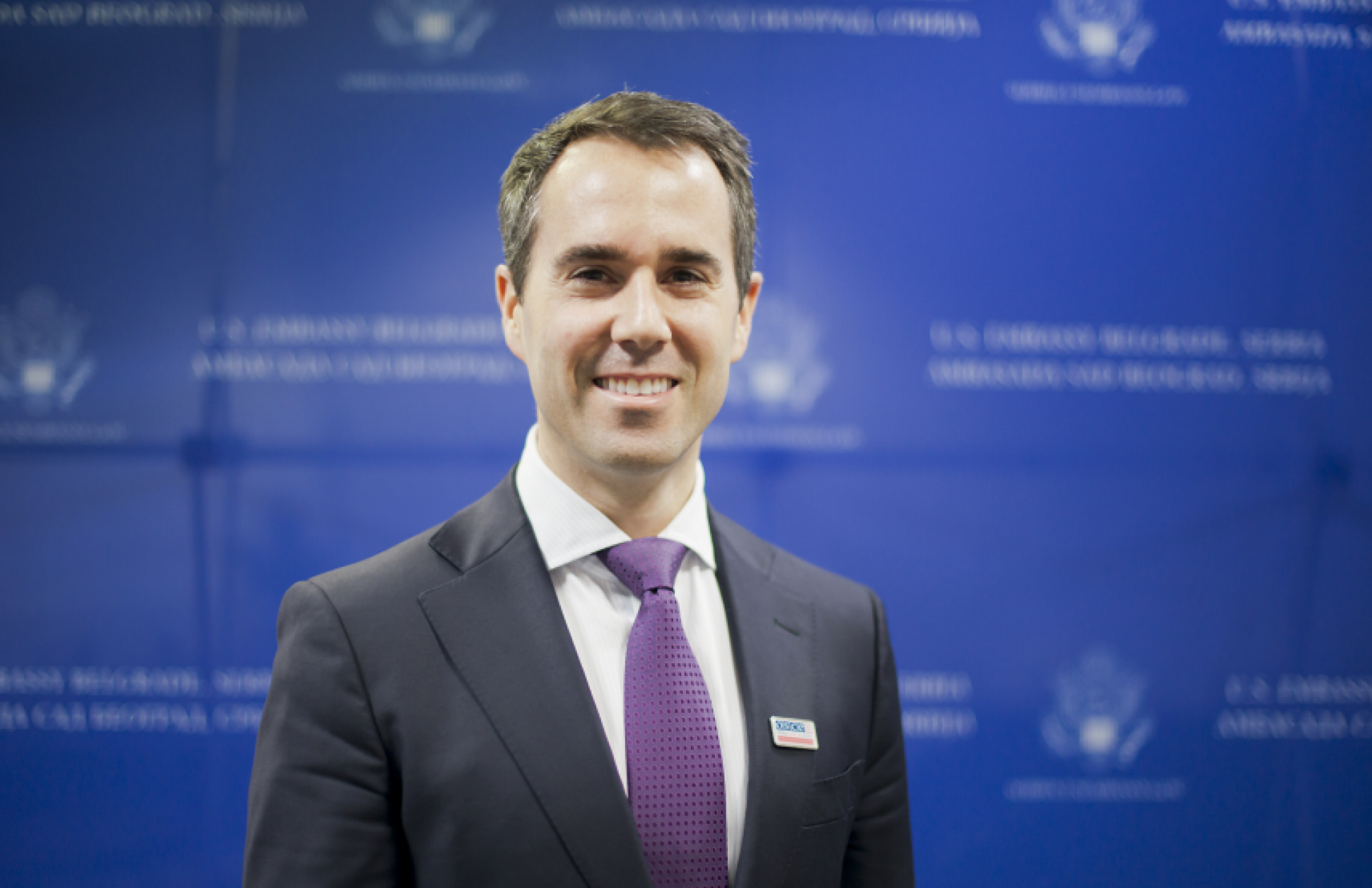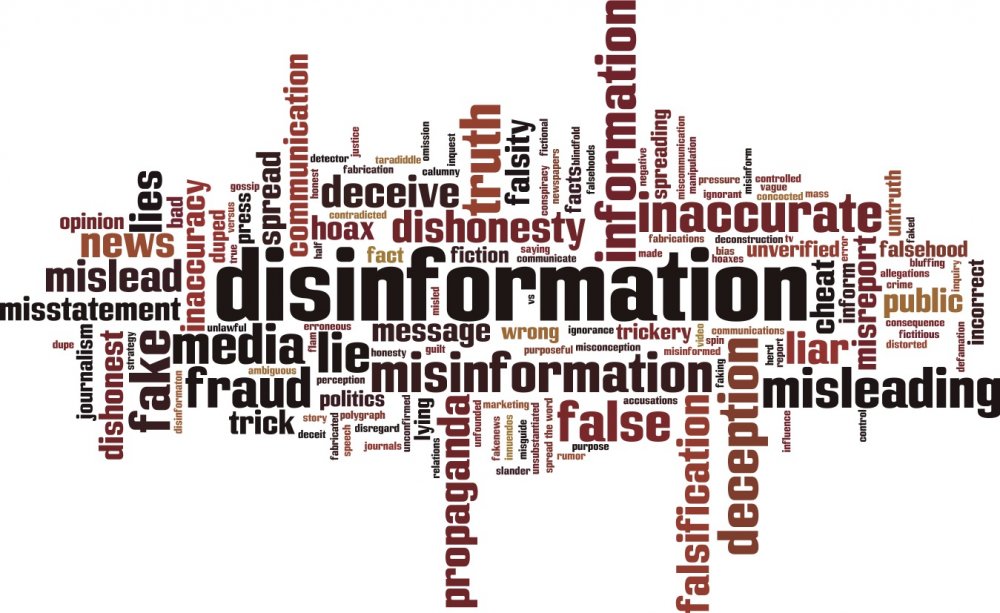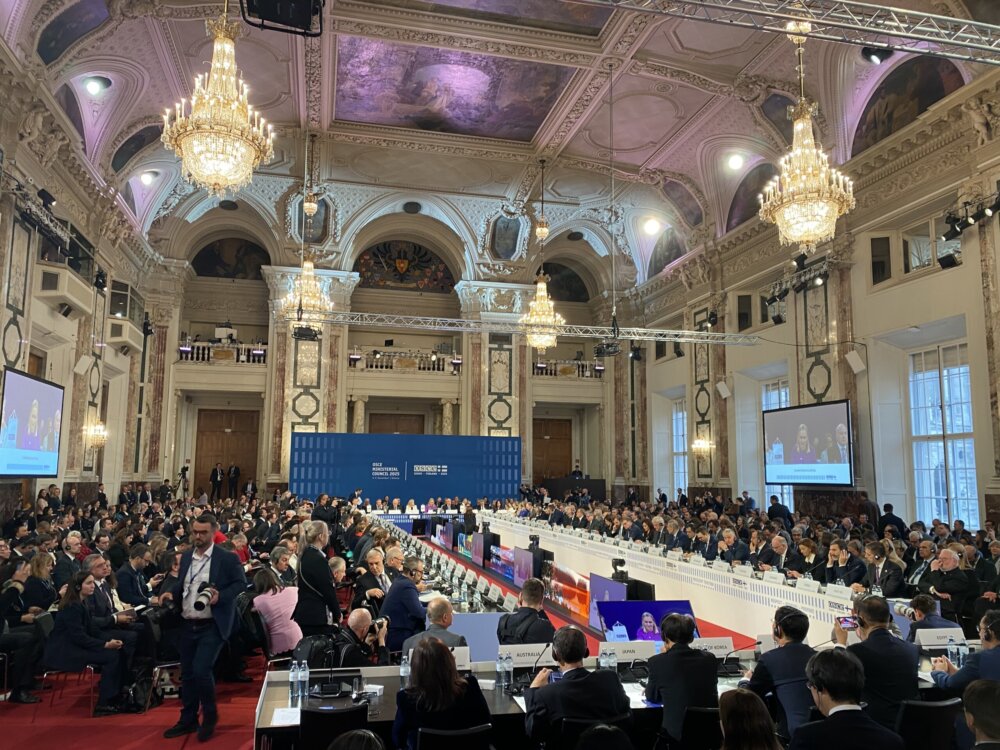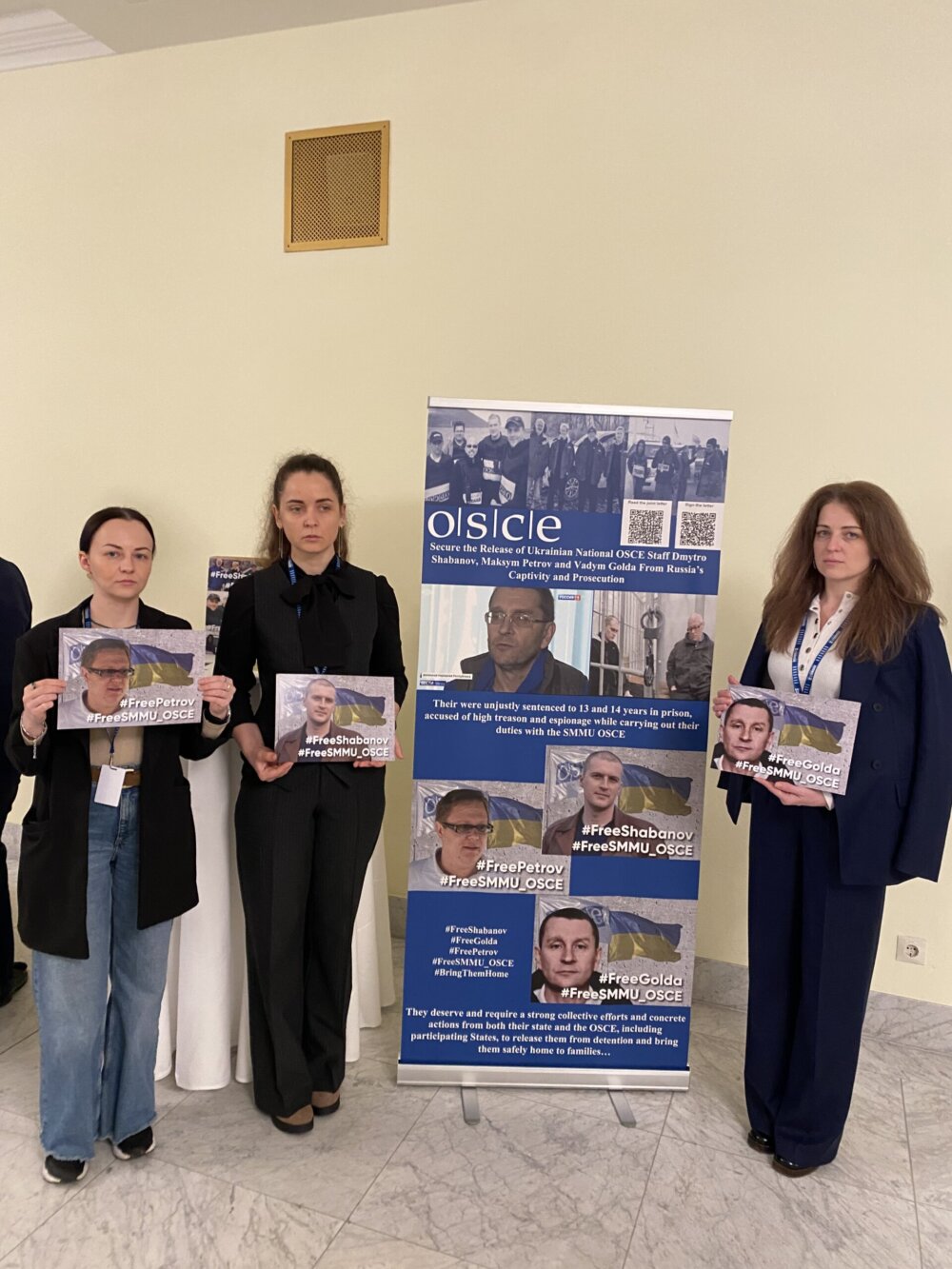Photo: Colin Peters/USOSCE

Interview with Daniel Baer, US Ambassador to the OSCE
On 7 September Stephanie Liechtenstein met with Daniel Baer, the US Ambassador to the OSCE, for an interview in Vienna. Ambassador Baer is a strong supporter of Ukraine’s sovereignty and territorial integrity and a staunch defender of fundamental human rights across the OSCE region. In this interview, Ambassador Baer talks about the situation in Ukraine and stresses that the full implementation of the Minsk Agreements is the best framework for a permanent, political solution to the conflict. He underlines the need for the international community to continue to press for complete, free and unfettered access for OSCE monitors to all areas in eastern Ukraine. He stresses that the most important aspect is for Russia to give a signal to its proxies on the ground in Ukraine that it does not want the OSCE monitors to be obstructed, harassed or shot at. Ambassador Baer describes the situation in parts of eastern Ukraine as a “dystopia that is run by armed thugs with machine guns patrolling the streets.” He believes that the security environment will have to change significantly before free and fair local elections can be run in eastern Ukraine. He does not exclude that at that point an armed presence may be needed to help ensure a safe environment for the elections. Apart from the situation in Ukraine, Ambassador Baer provides his views on the OSCE role in managing the migration and refugee flows, on the upcoming Human Dimension Implementation Meeting in Warsaw as well as on the upcoming Presidential Elections in the United States.
SHR Monitor: During the course of this summer, the OSCE Special Monitoring Mission has documented an increased amount of ceasefire violations in eastern Ukraine. This means that the implementation of the Minsk Agreements is not progressing as originally foreseen. It also means that important next steps, such as the holding of local elections, cannot take place. How can this stalemate be overcome? How can we prevent the Ukraine conflict from becoming another ‘protracted’ or ‘frozen’ conflict?
Daniel Baer: Let me start by saying that the Ukraine conflict isn’t a ‘frozen’ conflict. It would be irresponsible of the international community to allow it to become a so-called ‘frozen’ conflict. One of the reasons why Ukraine isn’t a ‘frozen’ conflict is because it is still very much a ‘hot’ conflict. When German Foreign Minister Frank-Walter Steinmeier convened Ministers in Potsdam on 1 September, he started the meeting by expressing his deep regret that this summer had been so violent. Indeed, during the course of this summer, we saw mounting ceasefire violations, especially the use of heavy weapons. This underscores again the urgency of finding a permanent resolution to the conflict. At the recent G 20 Summit, U.S. President Barack Obama once again underlined the importance of the full implementation of the Minsk Agreements. The full implementation of the Minsk Agreements is also a necessary prerequisite for us to start talking about the possible lifting of sanctions. I should add that on 5 September we marked the two-year anniversary of the Minsk Protocol, which still remains the best available framework for a permanent political solution to the conflict.
In the months ahead, a three-pronged approach will have to be followed: First, within the so-called Normandy Format, France and Germany will have to continue to work with Russia and Ukraine to find a path forward to improve the implementation of the Minsk Agreements. Second, the Trilateral Contact Group will have to continue to sort out some of the thorny issues, such as negotiating access for humanitarian assistance. Third, operationally on the ground, we have to make sure that the OSCE Special Monitoring Mission has access to all areas and is able to carry out the tasks that it was charged with.
SHR Monitor: As you have noted in a recent article in the Wall Street Journal, the work of OSCE Special Monitoring Mission to Ukraine (SMM) is increasingly obstructed by Russian-backed rebels. OSCE monitors are shot-at, blocked and harassed. This means that OSCE monitors cannot do their job properly and are not able to access the entire conflict zone in order to document important details of the ceasefire violations. How can this situation be addressed? Would it be advisable for the OSCE to send armed personnel to eastern Ukraine? If yes, what would such armed presence look like?
Daniel Baer: I think it is important to stay focused on what the SMM mandate is and what the mission has been charged to do. The most important aspect is for Russia to give a signal to its proxies on the ground in Ukraine that it does not want the OSCE monitors to be obstructed, harassed or shot at. The SMM needs to have access to all areas to do its job properly. It is important to add that it is very difficult for a civilian, unarmed mission to operate in and around a conflict zone and to do ceasefire monitoring. In addition, the SMM will have an important role to play once the ceasefire violations stop. In such a scenario, the SMM will be the eyes and ears that give both sides confidence that the ceasefire is real and that it is durable. For that reason, it is really important that we continue to press for complete, free and unfettered access for the SMM.
This access should not only be granted to the mission’s human monitors but also its technological tools. Unfortunately we have seen attacks on the SMM’s technological tools, such as on static cameras and Unmanned Aerial Vehicles (UAVs). Three long-range UAVs were shot and jammed earlier this summer, depleting the SMM of its long-range UAV supply. In addition, also earlier this summer, two static cameras were disabled and disconnected by Russian-backed separatists. The cameras were then replaced by the SMM but were again stolen in recent weeks. This attack on the technological tools of the SMM was described by OSCE Secretary General Lamberto Zannier as an attempt to “make the SMM blind”. That is a real concern.
Those who are harassing the SMM are doing it, if not by orders, with the permission of their superiors. There were a few incidents also on the Ukrainian controlled side. But there is a very big difference in the way those incidents are treated. The Ukrainians have followed up on the incidents, have identified the people responsible and have reiterated instructions to give the SMM safe passage. On the other side, however, we don’t see any of that. But even with that, the SMM has an established brand, for lack of a better term. People know that it is a civilian, unarmed mission that it is sent by all 57 OSCE states and that it is there to monitor what is happening on the ground.
There is nothing wrong with talking about whether the mission’s mandate can be changed. I just think that it is very unlikely that in the near or medium term there will be any agreement on it. In addition, I think that there is some value in the SMM continuing to do the good work that it is doing with the mandate it has — ideally under much better circumstances.
There is, however, a separate question that needs to be considered. If we had a fully-fledged ceasefire in place and weapons and fighters were pulled back to Russia, then we would be in a position where another part of the Minsk Agreements could be implemented, which is the holding of free and fair local elections in the special status areas. However, the security situation in the special status areas needs to change significantly before we can hold local elections. We need to have a serious discussion about what exactly needs to change on the ground so that credible, free and fair local elections can take place. Today, parts of eastern Ukraine are like a dystopia that is run by armed thugs with machine guns patrolling the streets — that is not an environment in which you can run free and fair elections.
SHR Monitor: Will the OSCE Office for Democratic Institutions and Human Rights (ODIHR) be able to monitor local elections in eastern Ukraine in line with its standards?
Daniel Baer: One of the parts of the Minsk Agreements says that ODIHR needs to be present to observe the local elections. ODIHR would need an atmosphere of security to be able to do that. The implementation of the Minsk Agreements requires a secure environment throughout the special status areas.
At that point the international community will have to be in conversation with Ukraine and others to assess what additional tools or support may be needed to ensure a secure environment for free and fair elections. One idea may be to leave the SMM and its mandate as it is and to consider an additional presence that could be part of an election security plan.
SHR Monitor: Could this additional presence be armed?
Daniel Baer: It depends on what mandate it is given and what is considered necessary to achieve the full implementation of the Minsk Agreements. But it is important not to entangle that question with the enduring value of the SMM’s role as a civilian monitoring mission.
SHR Monitor: Turning away from Ukraine, I would like to raise another challenge that the OSCE is currently facing. I am talking about the current migration and refugee crisis, which is the biggest such crisis since the end of the Second World War. The OSCE area has been widely affected by the migration and refugee flows, with a number of OSCE states serving as destination countries and others as transit countries. Where do you see the main role of the OSCE in managing the current refugee and migration flows?
Daniel Baer: If ever there were a challenge that represented the three dimensions of the OSCE and reflected the comprehensive nature of security, the migration and refugee flows are an example of that. As a regional security organization, the OSCE should not ignore the topic.
It is important to recognize that there are a number of different tasks in front of regional leaders and societies in responding to this. First, there is a political task. This is a collective action challenge. I don’t think that the OSCE is necessarily going to be the primary forum for resolving that collective action challenge, but it can serve as a useful platform for political exchange. Second, there are a number of technical challenges, such as countering the criminality of smugglers and traffickers and improving border control, which are all areas in which the OSCE is already engaged in. In addition, OSCE field missions, which are located in a number of transit countries, are already supporting host governments in their efforts to deal with the strain that the transit causes. OSCE field missions are in a good position to inform the OSCE Secretariat and OSCE participating States about the challenges they witness in connection with large refugee and migration flows.
Apart from that, I would argue that the OSCE is best positioned to offer long-term solutions. One of the things that the OSCE has succeeded at is helping societies respect fundamental human rights. This is crucial for managing integration. We are currently witnessing an upsurge in intolerance and xenophobia across Europe. This is not only morally repugnant and wrong; it is also incredibly dangerous for those societies. It does not make them stronger, it does not make them healthier, and it does not position them in a way that they can succeed economically. The societies that succeed in the long run will be the societies that are resilient and that manage to integrate diverse populations by harnessing their talents. The assistance that ODIHR gives to a number of OSCE participating States goes right to the heart of that challenge. We need to recognize that our increasingly diverse societies are an asset if we manage integration correctly. In that respect, the OSCE has a role to play to the extent that states are smart enough to make use of it.
SHR Monitor: Are you saying that the integration part is where the OSCE should mainly come in?
Daniel Baer: I think that there is a danger in how we talk about the refugee and migration challenge. I try to avoid using the word ‘crisis’ because it not only has a negative connotation but it also suggests that this is a short-term challenge. We need to recognize that this is about managing a reality. Once we acknowledge this fact, the question is not ‘how do we get rid of the reality’ — which is a false solution that is offered by demagogues in different parts of many societies — but how do we best manage it? How do we turn it into an asset? In this context, the OSCE can play a role in a number of discrete ways. It won’t be the only organization or even the foremost organization, but the challenge is large enough to allow multiple organizations and states to contribute to a constructive solution.
SHR Monitor: Turning to the human dimension of the OSCE, I would like to ask you about your concrete expectations of the upcoming Warsaw Human Dimension Implementation Meeting (HDIM), the OSCE’s premiere human rights event, at which OSCE states reflect upon the implementation of human rights commitments and fundamental freedoms. What is the concrete impact of the HDIM?
Daniel Baer: The HDIM is arguably the largest human rights gathering in Europe. The uniqueness of the HDIM is that civil society and governments are put on the same level and sit at the same table. One of the concrete impacts is that it reminds the courageous people who are mounting difficult human rights advocacy campaigns and who are providing services to vulnerable groups in dangerous places that they are not alone. This is a concrete impact that should not be undervalued. I have the highest respect for the work of human rights defenders across the OSCE area. If all that HDIM does is give us a chance to express appreciation for that work, then that is enough.
In addition, the meeting helps us as governments to better understand what concretely we need to do to better support human security across the OSCE region. The meeting gives us a sense of what issues other delegations and civil societies want our government to work on. In the closing session of the meeting, we usually reflect on statements made in the course of the two weeks of the HDIM and we identify concrete issues that we will follow-up on. For example, last year we brought somebody from the U.S. Department of Justice to Vienna to brief delegations about the investigations into the police department in Ferguson, Missouri. This September we had another event in Vienna where we invited people to discuss the issue of capital punishment in the United States.
It would be ideal if other governments also took steps to identify concrete issues that they will follow-up on. After all, the HDIM is meant to be an implementation review meeting. It is meant to be an opportunity to identify the gaps between what we have committed to do and what we have actually done. We take that very seriously.
SHR Monitor: On 1 September the German Foreign Minister and OSCE Chairperson-in-Office, Frank-Walter Steinmeier, convened 57 OSCE ministers in Potsdam, Germany, for an informal meeting. What was discussed at this meeting and what was its purpose?
Daniel Baer: That question would be better placed to the German OSCE delegation. The meeting was an opportunity for Foreign Minister Steinmeier to demonstrate ongoing German commitment to using the OSCE as a political forum and to demonstrate support for the organization’s operational capacities. One of the things that struck me was how many ministers offered their congratulations for the work of the SMM. I personally did not come away from the meeting surprised by anything that anybody said, but it was a chance for Germany to demonstrate its leadership during difficult times.
SHR Monitor: Finally, if you permit, I would like to briefly speak about the upcoming Presidential elections in the United States. The OSCE ODIHR will send a large mission to observe the elections. What is the feeling in the US about an OSCE election observation mission?
Daniel Baer: In July, I went to Nashville, Tennessee, together with the ODIHR Director Michael Link, to attend the annual meeting of the top election officials of all U.S. states. In the United States, one of the challenges is that elections are not a federal competence but are run at the state and local level. This means that there are many different officials, including local officials that you have to brief about OSCE activities. From my perspective, the elections and the OSCE election observation mission are a real opportunity for us to showcase what is most exciting about American election days. Elections in America are a very complicated bottom-up system. We have a society of more than 300 million people, who live in geographically very different areas, including in small towns, farms or densely populated cities. They all come together on one day. For the most part, the election process works really well and is a great example of democracy in action. At the meeting in July, we thanked election officials in advance for their efforts, as on Election Day they are usually very busy and have to do a lot of problem solving. The reception was warm and people are excited to showcase what America has to offer on Election Day.



Comments
* Your email address will not be published